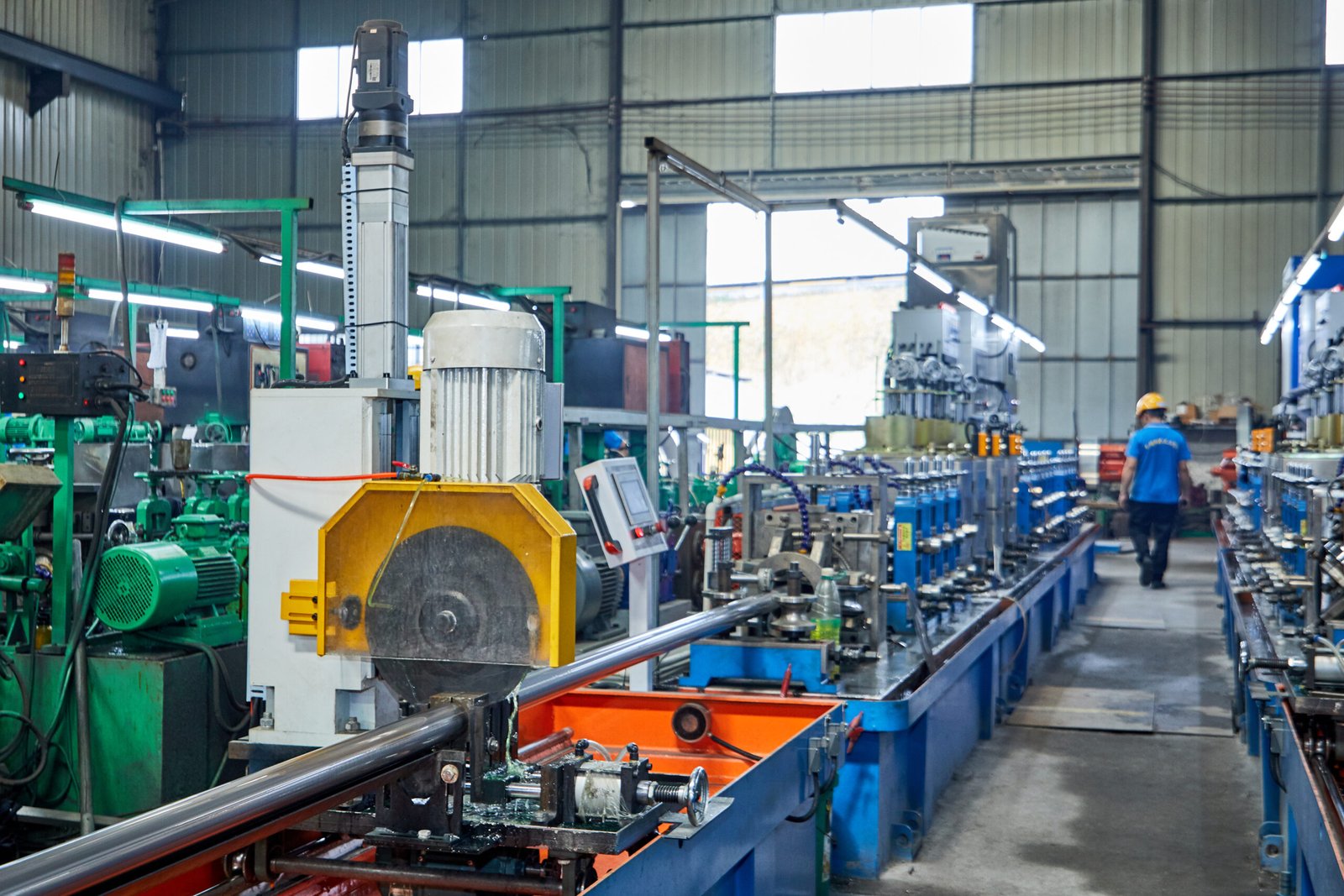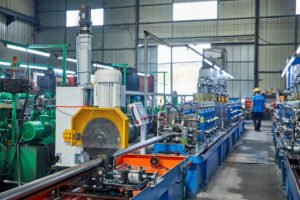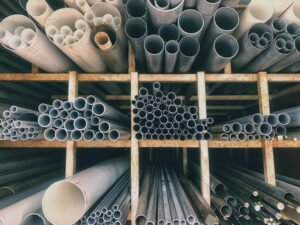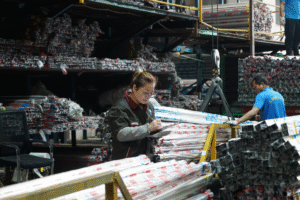2025 Nickel Market Outlook: Impact on Stainless Pipe Pricing

Are you struggling to forecast budgets with nickel's unpredictable price swings? This market volatility directly threatens the profitability of your projects, making accurate cost planning for stainless steel pipes nearly impossible and putting your competitive edge at risk. A clear understanding of the 2025 nickel market is vital.
The 2025 nickel market is defined by a surplus in metallurgical-grade nickel, driven by Indonesian output, and a concurrent tightness in the high-purity supply demanded by the EV battery sector. This bifurcation creates significant price volatility, directly impacting the alloy surcharges and final cost of stainless pipes.
Navigating this complex landscape requires more than just a surface-level glance at daily commodity prices. To truly protect your bottom line and ensure supply chain stability, you must grasp the underlying geopolitical, industrial, and economic forces at play. As we journey deeper into 2025, this knowledge will become your most valuable asset in strategic procurement.
The current nickel market is a tale of two distinct narratives. On one side, the electric vehicle industry's explosive growth is fueling an unprecedented demand for high-purity Class 1 nickel, creating structural deficits and price premiums. On the other, the stainless steel sector is navigating a surplus of Class 2 nickel, largely thanks to Indonesia's massive expansion of Nickel Pig Iron (NPI) production1. A mid-2024 analysis from commodity intelligence firms already pointed to this growing divergence. For procurement managers in the stainless steel pipe industry, failing to distinguish between these two narratives is a critical error that can lead to flawed budget projections and missed opportunities for cost optimization.
What are the current trends and facts about the nickel market in 2025?
Feeling disoriented by the conflicting headlines and analyst reports on the nickel market? Relying on incomplete information can lead to disastrous procurement decisions, causing you to buy at peak prices in a market that punishes reactive strategies. Let's clarify the essential trends defining 2025.
In 2025, the nickel market is characterized by Indonesian supply dominance creating a surplus in Class 2 nickel, while strong EV demand tightens the Class 1 market. This divergence, alongside new ESG regulations and ongoing logistical challenges, fuels a complex and volatile pricing environment for stainless steel.
This dual-market reality is the single most important concept for any stainless steel buyer to understand today. While general news might report a nickel surplus, your experience is dictated by the specific grade you require. The London Metal Exchange (LME) price is only the beginning of the story; regional premiums, alloy composition, and supplier relationships ultimately determine the final price of your stainless steel pipes. I recall a conversation with a client, a major engineering contractor in India, who was planning a large-scale desalination plant. They had initially based their cost estimates on the headline LME nickel price, overlooking the specific premiums for the duplex stainless steel pipes required for the project's corrosive environment. This oversight nearly jeopardized their bid. It was a powerful lesson in the importance of looking beyond the surface-level data. The intricacies of the market—from supply chain logistics to the nuances of nickel classification—are where risks hide and opportunities are found. In the following analysis, we will delve into these critical details to provide a much clearer picture of the current landscape.
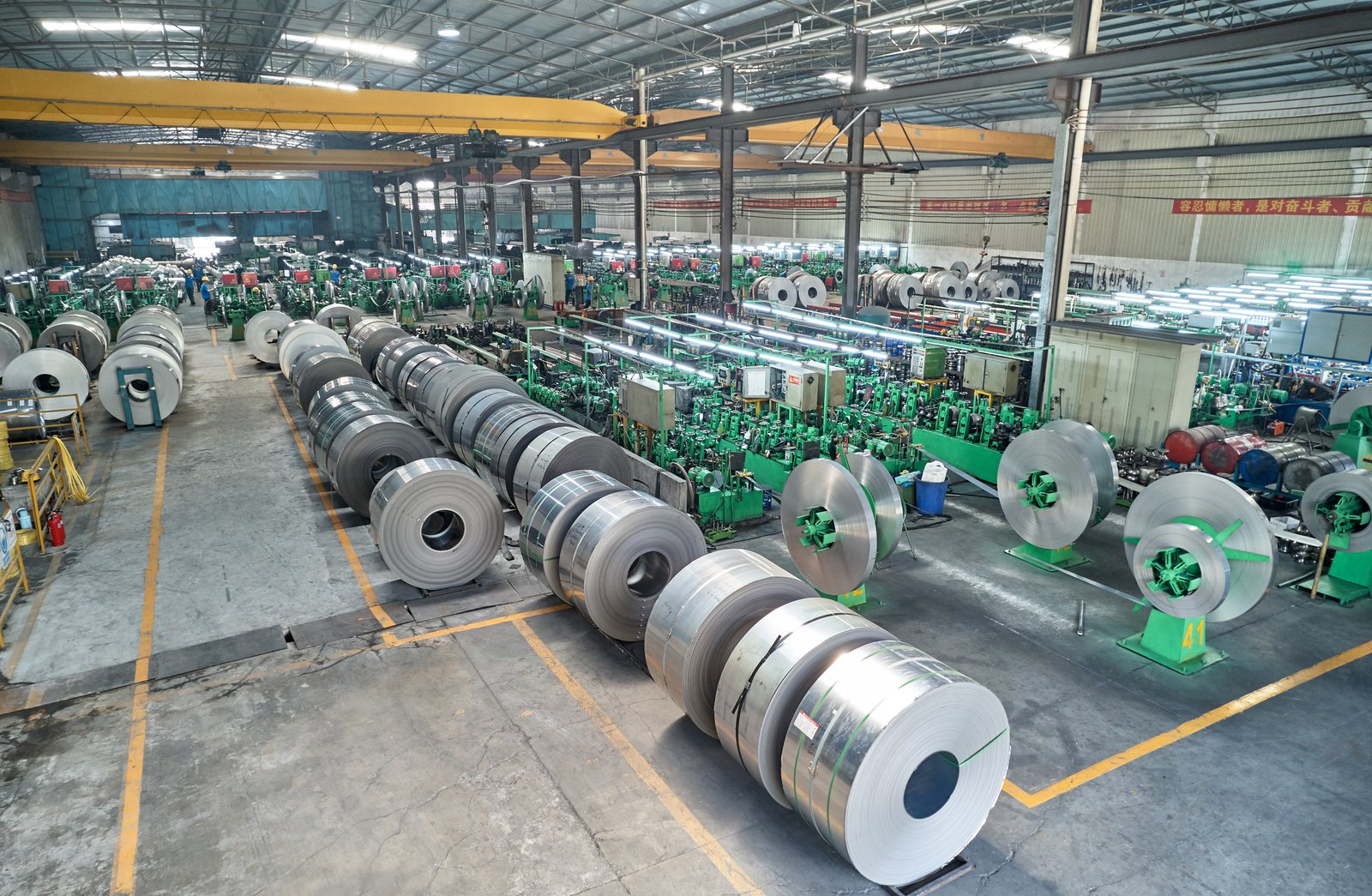
The nickel market of 2025 is not a monolith; it's a fractured landscape shaped by powerful, often opposing, forces. For anyone involved in the procurement of stainless steel pipes, understanding this fragmentation is no longer just an advantage—it's a necessity for survival. The dynamics of supply, the bifurcation of demand, and the increasing influence of non-market factors like geopolitics and environmental governance are creating a new playbook for the industry. Success now depends on a granular understanding of these trends, moving beyond simple price tracking to a more holistic, strategic analysis of the entire value chain. From the mines in Indonesia to the factory floor in China and the final project site in the Middle East, every link in the chain is being tested and redefined.
The Indonesian Juggernaut and Its Global Impact
Indonesia's role in the nickel market has transformed from significant to absolutely dominant. The country's massive investments in Nickel Pig Iron (NPI) and, more recently, High-Pressure Acid Leaching (HPAL) projects2 have flooded the market with Class 2 nickel, the primary feedstock for 300-series stainless steel. Government data from the first half of 2025 shows Indonesian nickel ore production increased by another 12% year-over-year, effectively setting a global price floor for stainless-grade nickel. This has been a game-changer for integrated producers like us at MFY. By strategically sourcing NPI and establishing processing facilities that align with this supply chain, we can offer more stable and competitive pricing for our stainless pipe products.
However, this dominance comes with its own set of risks for global buyers. Indonesia has demonstrated a willingness to use policy to control the market, from export bans on raw ore to discussions around forming a nickel-specific OPEC-style cartel. A recent client of ours, a large distributor in Southeast Asia, faced significant disruption when their traditional suppliers in other regions couldn't compete with the cost structure of Indonesian-backed stainless mills. They had to rapidly pivot their sourcing strategy, a process we helped them navigate. This situation highlights the new reality: dependency on a single region, no matter how cost-effective, creates vulnerabilities that must be managed through diversified sourcing and strong supplier partnerships.
The ripple effect extends beyond pricing. The sheer scale of Indonesian production is reshaping global trade flows. We are seeing a definitive shift, with more and more stainless steel processing and manufacturing capacity moving closer to the source of this nickel supply. This consolidation presents both opportunities for efficiency and risks of supply chain bottlenecks. For end-users, it means the supplier's own supply chain resilience is as important as the product's quality.
The Great Divide: Battery-Grade vs. Stainless-Grade Nickel
The most critical trend to grasp is the widening chasm between Class 1 (high-purity) nickel, coveted by the EV battery industry, and Class 2 (lower-purity) nickel, used for stainless steel. While the overall market might appear to be in a surplus, this is almost entirely a Class 2 phenomenon. The demand for Class 1 nickel is growing relentlessly. Projections for 2025 indicate that the battery sector will consume over 25% of the global Class 1 supply, a figure expected to approach 40% by the end of the decade. This insatiable appetite is creating a structural tightness and a persistent "battery premium" on high-purity nickel.
This bifurcation has direct consequences for stainless pipe buyers, especially for those requiring high-performance grades. For example, the production of certain corrosion-resistant alloys, like 316L or 904L, relies on nickel inputs that are closer to the Class 1 specification. As a result, the alloy surcharges for these grades can become detached from the general NPI-driven price trend. I worked with an equipment integrator for the food and beverage industry who was baffled by the rising costs of their 316L tubing, even as they heard news of a "nickel surplus." The explanation lay in this market divide. Their material required a higher quality nickel input, which was being influenced more by the demands of a gigafactory in Nevada than a stainless mill in Asia.
To help our clients visualize this, we often use a comparative analysis. The table below illustrates the key differences and how they impact the two primary end-use markets. Understanding this distinction is fundamental to accurate forecasting and avoiding costly surprises in alloy surcharge calculations.
| Характеристика | Class 1 Nickel | Class 2 Nickel (e.g., NPI, Ferronickel) |
|---|---|---|
| Purity | ≥ 99.8% Nickel | 1.8% - 40% Nickel |
| Primary Form | Electrolytic cathodes, powders, briquettes | Nickel Pig Iron (NPI), Ferronickel |
| Primary Demand Driver | EV Batteries, Aerospace Alloys | Stainless Steel Production (esp. 300 series) |
| Pricing Benchmark | LME Contract, often with a premium | Linked to LME but heavily discounted |
| 2025 Market Trend | Market tightness, supply deficit | Market surplus, price suppression |
The Emerging Influence of ESG and Geopolitics
Beyond traditional supply and demand, a new set of factors is beginning to exert significant influence on the nickel market: Environmental, Social, and Governance (ESG) criteria and geopolitics. Western markets, particularly the EU with its Carbon Border Adjustment Mechanism (CBAM), are increasingly scrutinizing the carbon footprint of imported materials. This is a direct challenge to the Indonesian production model, which has historically been more carbon-intensive due to its reliance on coal-fired power. As of 2025, while the financial impact of CBAM is still in its transition phase, the compliance and reporting burdens are already affecting trade.
We are actively working with our European clients to navigate these new requirements. One such client, an engineering contractor based in Germany, now requires full traceability and carbon footprint data for the stainless steel pipes used in their public infrastructure projects. Thanks to MFY's fully integrated supply chain, we are able to provide this data, turning a potential regulatory hurdle into a competitive advantage for our client. This "green premium" is becoming a tangible factor. Nickel produced through more sustainable methods, such as hydrometallurgy or facilities powered by renewables, may soon command a higher price or gain preferential market access.
Geopolitical tensions add another layer of uncertainty. Trade disputes, sanctions, and resource nationalism can disrupt supply chains with little warning. The concentration of both Class 1 and Class 2 nickel production in a relatively small number of countries (e.g., Russia for Class 1, Indonesia for Class 2) creates choke points that are vulnerable to political instability. For a global business, this underscores the importance of having a geographically diversified sourcing strategy or partnering with a major player like MFY whose scale and network can help absorb and mitigate these regional shocks.
Indonesia dominates Class 2 nickel supplyПравда
Indonesia's massive NPI production has created a global surplus of stainless-grade nickel, setting price floors.
EV demand reduces stainless nickel costsЛожь
EV battery demand tightens high-purity nickel supply, creating premiums that can increase costs for specialty stainless grades.
How does nickel market volatility affect stainless pipe pricing?
Are you finding it impossible to provide stable, long-term quotes to your customers? The direct link between the volatile nickel market and stainless steel alloy surcharges means your pricing is in constant flux, eroding trust and making financial planning a nightmare. Let's break down this connection.
Nickel market volatility directly impacts stainless pipe pricing through the alloy surcharge mechanism. As nickel is a key component, its price fluctuations on exchanges like the LME are passed on to the end consumer, creating unpredictable and often significant monthly changes in the final pipe cost.
This direct, almost immediate, correlation between the commodity market and the finished product is a unique challenge in our industry. Unlike other materials where prices might be adjusted quarterly or annually, stainless steel prices can shift dramatically from one month to the next. I’ve seen clients lose profitable contracts because their quote, based on last month's surcharge, was no longer viable by the time the customer was ready to order. This underscores the critical need for a pricing mechanism and a supplier partnership that can manage this volatility. It requires a move away from simple spot-price purchasing towards a more strategic approach that incorporates market intelligence, hedging, and clear communication throughout the supply chain. In the following sections, we will explore the mechanics of the alloy surcharge, the psychological impact of price uncertainty on the market, and how these factors combine to create a challenging environment for everyone from distributors to end-users.

The relationship between nickel price volatility and the cost of stainless steel pipes is direct, immediate, and often unforgiving. It’s a reality that every player in the supply chain must contend with, from raw material traders to the final contractor installing the pipe. This volatility is not just a number on a screen; it translates into real-world business risks, influencing project viability, inventory management, and customer relationships. To effectively manage these challenges, a deeper understanding of the mechanisms at play is not just beneficial—it's essential. We must look at how pricing is structured, how market sentiment amplifies these fluctuations, and the tangible impact on project planning and execution. This knowledge forms the bedrock of a resilient procurement strategy.
The Alloy Surcharge: A Direct Pass-Through Mechanism
The alloy surcharge is the primary vehicle through which nickel price volatility is transferred to the stainless steel pipe buyer. It is a formula-based pricing component, calculated monthly by mills, that is added to a base price for stainless steel. This surcharge is designed to protect producers from the fluctuating costs of the key alloying elements, with nickel being the most significant and volatile component for the popular 300-series (e.g., 304 and 316) grades. The formula typically takes the average price of nickel (and other elements like chromium and molybdenum) on the LME from the preceding month and applies it to the current month's sales.
This "pass-through" model means there is a direct and transparent, albeit delayed, link between the commodity markets and your invoice. For instance, a spike in LME nickel prices in June will directly lead to a higher alloy surcharge and thus a higher pipe cost in July. We recently assisted a manufacturing client who produces heat exchangers. They were accustomed to more stable raw material pricing in other parts of their business and were consistently caught off-guard by the monthly swings in their stainless tube costs. We helped them by de-mystifying the surcharge calculation, providing them with our own monthly forecast based on our market intelligence. This allowed them to anticipate price changes and adjust their own quoting to customers, protecting their margins.
The transparency of the surcharge is a double-edged sword. While it clearly shows how prices are derived, it also exposes the buyer to the full force of market volatility without any buffer. This makes cash flow management difficult and long-term project bidding a significant gamble unless a price stabilization strategy is in place.
Amplification through Market Sentiment and Inventory Cycles
The impact of nickel's price volatility is often amplified by market psychology and resulting inventory cycles. When prices are rising, a sense of urgency can permeate the market. Distributors and end-users may engage in "panic buying," purchasing more material than immediately needed to avoid even higher prices in the future. This artificially inflates demand, further supporting the price rally and creating a feedback loop. Conversely, when prices start to fall, buyers often retreat from the market, hoping to purchase at the bottom. This sudden drop in demand can accelerate the price decline.
These sentiment-driven boom-and-bust cycles create significant challenges for managing inventory. I remember the extreme volatility of early 2022 when nickel prices surged to unprecedented levels. Many distributors who had loaded up on high-cost inventory were subsequently caught when the price collapsed, leading to massive financial losses. A client of ours, a pipe and tube distributor in the Middle East, managed to weather this storm by working closely with us. We provided them with a more flexible delivery schedule and adjusted inventory levels at our own bonded warehouse, allowing them to purchase material more closely aligned with their actual end-user demand rather than speculating on market direction.
This illustrates that raw material price volatility doesn't just affect the purchase price; it creates systemic risk throughout the supply chain. It turns inventory from a simple asset into a significant liability if not managed with a deep understanding of these market cycles.
Impact on Project Planning and Fixed-Price Contracts
For engineering and construction contractors, the volatility of stainless pipe pricing is a primary threat to profitability, especially on projects with long timelines and fixed-price contracts. A contractor might win a bid for a major infrastructure project, like a chemical plant or an LNG facility, based on the stainless pipe costs at the time of the tender. However, the actual procurement of the pipes might not happen for another 6 to 12 months. In that time, a surge in the nickel market could completely erase the project's profit margin or even lead to a loss.
A prime example is a construction partner we work with in Russia who specializes in industrial facilities. They were bidding on a project that required extensive use of 316L stainless pipes. The project timeline was 18 months. Bidding based on the spot price was simply too risky. We worked with them to structure a long-term supply agreement that included a fixed-price component for a portion of their required volume, with the rest subject to a pre-agreed pricing formula that mitigated extreme volatility. This solution gave them the cost certainty needed to submit a competitive and profitable bid.
This type of risk is forcing a change in how contracts are structured in the industry. We are seeing more projects that include escalator clauses tied to commodity indices, or a move towards collaborative, open-book pricing models between the contractor and the end client. Without such mechanisms, the risk of bidding on large-scale, fixed-price projects becomes almost untenable for contractors. It highlights the critical need for suppliers who can act as partners in risk management, not just as vendors of a product.
Nickel prices directly affect stainless pipe costsПравда
The alloy surcharge mechanism passes nickel price fluctuations directly to stainless steel pipe buyers, creating monthly price adjustments.
Stainless steel prices adjust annuallyЛожь
Unlike some materials, stainless steel prices can change dramatically month-to-month due to the alloy surcharge mechanism tied to nickel market volatility.
What are the potential economic and industrial impacts of nickel pricing on the stainless steel industry?
Are you concerned about how sustained high nickel prices could fundamentally reshape the industry? It's not just about temporary cost increases; extreme price levels can trigger long-term shifts in material usage, investment, and competition, affecting your business's future. Let's explore these profound impacts.
Sustained high or volatile nickel prices can trigger significant industrial shifts, including material substitution towards lower-nickel or nickel-free grades, reduced capital investment in sectors dependent on high-grade stainless steel, and consolidation within the industry as less efficient producers become unprofitable.
These impacts go far beyond the monthly alloy surcharge. They can alter the very fabric of the stainless steel market, influencing everything from R&D priorities3 to global trade dynamics. I've personally seen how periods of extreme nickel prices in the past have accelerated the development and adoption of ferritic and duplex stainless steels3. A long-term client in the automotive exhaust manufacturing sector, for example, began a major R&D push into ferritic grades during a nickel price spike over a decade ago; today, it’s their standard material. This is a story that repeats across industries. Understanding these potential long-term shifts is crucial for strategic planning, ensuring that your business is not only reacting to today's prices but also preparing for tomorrow's market realities.
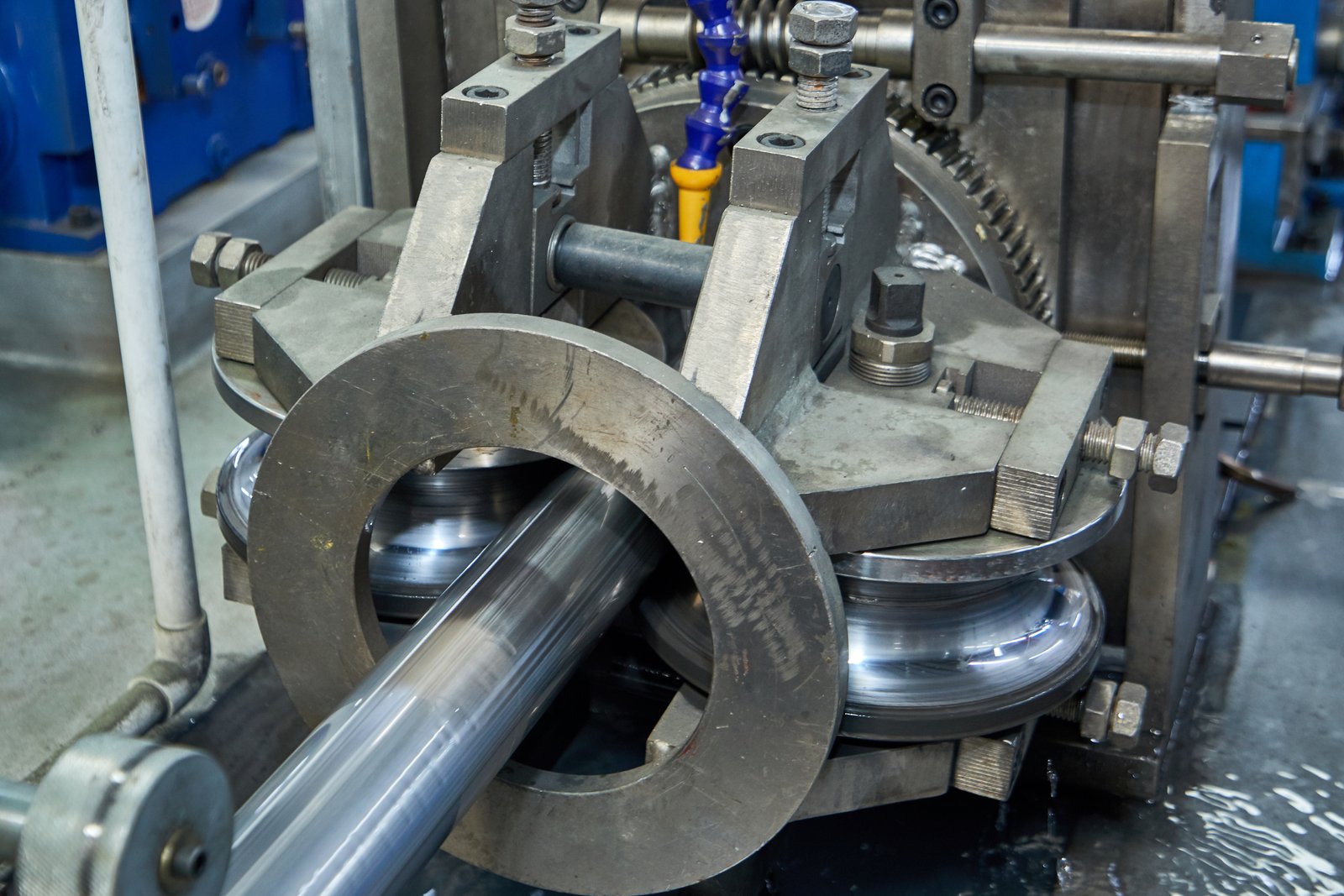
The economic and industrial consequences of nickel price behavior extend far beyond the immediate financial pressures on individual businesses. They have the power to catalyze fundamental, long-lasting transformations within the stainless steel ecosystem. These shifts can alter demand patterns, force technological innovation, and even redraw the map of global production and trade. When prices become structurally high or persistently volatile, the industry doesn't just absorb the cost—it adapts, innovates, and evolves. For any company invested in this sector, from raw material suppliers to end-users, recognizing the early signs of these transformations is critical for long-term strategic positioning and survival.
The Threat of Material Substitution and Thrifting
One of the most significant industrial impacts of sustained high nickel prices is the drive towards material substitution. When the cost of nickel-bearing austenitic grades like 304 and 316 becomes prohibitive4 for certain applications, engineers and designers are forced to look for alternatives. This opens the door for lower-nickel content grades, such as the 200-series stainless steels (which substitute manganese for some of the nickel), duplex stainless steels (which have a balanced ferrite-austenite structure and lower nickel content than comparable austenitic grades), and nickel-free ferritic grades (like the 400-series).
For example, in the architectural and construction sectors, we've seen a notable increase in inquiries for lean duplex grades for structural applications where a high level of corrosion resistance is needed but the cost of 316L has become a barrier. We worked with a contractor on a coastal boardwalk project who was able to switch from their initial specification of 316L to a lean duplex grade we recommended. This saved them nearly 20% on their material costs without compromising the required performance, making the project financially viable. This process, known as "thrifting," becomes a major R&D driver for steel mills, pushing them to develop new, more cost-effective alloys. A 2024 report by a leading metals consultancy noted that R&D filings for low-nickel alloys had increased by 30% in the preceding two years, a direct response to market volatility.
This trend represents both a threat and an opportunity. For companies heavily reliant on traditional 300-series grades, it's a threat to their market share. For innovative and diversified producers like MFY, which has a broad portfolio including duplex and other specialty pipes, it's an opportunity to provide value-engineered solutions and capture new segments of the market.
Shifting Investment Patterns and Capital Projects
The price and volatility of nickel can have a chilling effect on new capital investments in industries that rely heavily on high-grade stainless steel. Sectors like chemical processing, oil and gas, and LNG require materials that can withstand extreme temperatures and corrosive environments, for which high-nickel alloys are often the only choice. When the price of these essential materials becomes unpredictably high, it can delay or even cancel major capital projects. The uncertainty makes it impossible for companies to create a reliable long-term return on investment (ROI) calculation.
I recall a conversation with a senior executive at a global engineering firm who mentioned they had put two major chemical plant expansion projects on hold. The reason was not a lack of demand for the end product, but the inability to hedge or fix the cost of the massive quantities of high-alloy stainless steel pipe required. The risk posed by nickel volatility to the multi-billion-dollar project budget was simply too great to bear. This creates a ripple effect, impacting not just the stainless steel producers but also the entire ecosystem of contractors, fabricators, and equipment suppliers.
Conversely, this environment can spur investment in different areas. For instance, it can accelerate investment in technologies that improve nickel extraction efficiency or enable the use of lower-grade nickel resources. It also drives investment towards manufacturing facilities in regions with lower energy costs or direct access to the raw materials, like Indonesia, further cementing the global production shifts we are currently witnessing.
Industry Consolidation and Supply Chain Resilience
A prolonged period of extreme price volatility often leads to market consolidation. Smaller, less-integrated stainless steel producers or distributors who lack the financial strength, purchasing power, or sophisticated hedging strategies to manage price swings find themselves in a precarious position. They may face margin compression to the point of unprofitability, making them ripe for acquisition by larger, more resilient players. We have observed this trend in several regional markets where smaller distributors, unable to manage their high-cost inventory during price downturns, were either forced to close or sell to larger competitors.
This consolidation can lead to a less competitive landscape, with fewer suppliers controlling a larger share of the market. For buyers, this can mean less choice and potentially less pricing power in the long run. It elevates the importance of choosing a supply partner that is not just a vendor but a financially stable, vertically integrated entity. A supplier like MFY, with its diversified business model spanning raw materials, production, and logistics, is inherently more resilient to market shocks.
This environment forces all serious players to re-evaluate their supply chain strategy. The focus shifts from "just-in-time" to "just-in-case," prioritizing resilience and reliability over pure cost minimization. Companies are now more willing to build stronger, more transparent relationships with key suppliers, enter into longer-term agreements, and even co-invest in inventory programs to secure their supply of critical materials like stainless steel pipe. The pain of volatility is reshaping procurement from a transactional function to a strategic one.
High nickel prices drive material substitutionПравда
As explained in the article, sustained high nickel prices lead industries to adopt lower-nickel or nickel-free stainless steel alternatives like ferritic and duplex grades.
Nickel volatility increases capital investmentsЛожь
The article clearly states that nickel price volatility actually delays or cancels major capital projects due to unpredictable material costs.
What are the potential economic and industrial impacts of nickel pricing on the stainless steel industry?
Are you concerned about how sustained high nickel prices could fundamentally reshape the industry? It's not just about temporary cost increases; extreme price levels can trigger long-term shifts in material usage, investment, and competition, affecting your business's future. Let's explore these profound impacts.
Sustained high or volatile nickel prices can trigger significant industrial shifts, including material substitution towards lower-nickel or nickel-free grades, reduced capital investment in sectors dependent on high-grade stainless steel, and consolidation within the industry as less efficient producers become unprofitable.
These impacts go far beyond the monthly alloy surcharge. They can alter the very fabric of the stainless steel market, influencing everything from R&D priorities to global trade dynamics. I've personally seen how periods of extreme nickel prices in the past have accelerated the development and adoption of ferritic and duplex stainless steels. A long-term client in the automotive exhaust manufacturing sector, for example, began a major R&D push into ferritic grades during a nickel price spike over a decade ago; today, it’s their standard material. This is a story that repeats across industries. Understanding these potential long-term shifts is crucial for strategic planning, ensuring that your business is not only reacting to today's prices but also preparing for tomorrow's market realities.

The economic and industrial consequences of nickel price behavior extend far beyond the immediate financial pressures on individual businesses. They have the power to catalyze fundamental, long-lasting transformations within the stainless steel ecosystem. These shifts can alter demand patterns, force technological innovation, and even redraw the map of global production and trade. When prices become structurally high or persistently volatile, the industry doesn't just absorb the cost—it adapts, innovates, and evolves. For any company invested in this sector, from raw material suppliers to end-users, recognizing the early signs of these transformations is critical for long-term strategic positioning and survival.
The Threat of Material Substitution and Thrifting
One of the most significant industrial impacts of sustained high nickel prices is the drive towards material substitution. When the cost of nickel-bearing austenitic grades like 304 and 316 becomes prohibitive for certain applications, engineers and designers are forced to look for alternatives. This opens the door for lower-nickel content grades, such as the 200-series stainless steels (which substitute manganese for some of the nickel), duplex stainless steels (which have a balanced ferrite-austenite structure and lower nickel content than comparable austenitic grades), and nickel-free ferritic grades (like the 400-series).
For example, in the architectural and construction sectors, we've seen a notable increase in inquiries for lean duplex grades for structural applications where a high level of corrosion resistance is needed but the cost of 316L has become a barrier. We worked with a contractor on a coastal boardwalk project who was able to switch from their initial specification of 316L to a lean duplex grade we recommended. This saved them nearly 20% on their material costs without compromising the required performance, making the project financially viable. This process, known as "thrifting," becomes a major R&D driver for steel mills, pushing them to develop new, more cost-effective alloys. A 2024 report by a leading metals consultancy noted that R&D filings for low-nickel alloys had increased by 30% in the preceding two years, a direct response to market volatility.
This trend represents both a threat and an opportunity. For companies heavily reliant on traditional 300-series grades, it's a threat to their market share. For innovative and diversified producers like MFY, which has a broad portfolio including duplex and other specialty pipes, it's an opportunity to provide value-engineered solutions and capture new segments of the market.
Shifting Investment Patterns and Capital Projects
The price and volatility of nickel can have a chilling effect on new capital investments in industries that rely heavily on high-grade stainless steel. Sectors like chemical processing, oil and gas, and LNG require materials that can withstand extreme temperatures and corrosive environments, for which high-nickel alloys are often the only choice. When the price of these essential materials becomes unpredictably high, it can delay or even cancel major capital projects. The uncertainty makes it impossible for companies to create a reliable long-term return on investment (ROI) calculation.
I recall a conversation with a senior executive at a global engineering firm who mentioned they had put two major chemical plant expansion projects on hold. The reason was not a lack of demand for the end product, but the inability to hedge or fix the cost of the massive quantities of high-alloy stainless steel pipe required. The risk posed by nickel volatility to the multi-billion-dollar project budget was simply too great to bear. This creates a ripple effect, impacting not just the stainless steel producers but also the entire ecosystem of contractors, fabricators, and equipment suppliers.
Conversely, this environment can spur investment in different areas. For instance, it can accelerate investment in technologies that improve nickel extraction efficiency or enable the use of lower-grade nickel resources. It also drives investment towards manufacturing facilities in regions with lower energy costs or direct access to the raw materials, like Indonesia, further cementing the global production shifts we are currently witnessing.
Industry Consolidation and Supply Chain Resilience
A prolonged period of extreme price volatility often leads to market consolidation. Smaller, less-integrated stainless steel producers or distributors who lack the financial strength, purchasing power, or sophisticated hedging strategies to manage price swings find themselves in a precarious position. They may face margin compression to the point of unprofitability, making them ripe for acquisition by larger, more resilient players. We have observed this trend in several regional markets where smaller distributors, unable to manage their high-cost inventory during price downturns, were either forced to close or sell to larger competitors.
This consolidation can lead to a less competitive landscape, with fewer suppliers controlling a larger share of the market. For buyers, this can mean less choice and potentially less pricing power in the long run. It elevates the importance of choosing a supply partner that is not just a vendor but a financially stable, vertically integrated entity. A supplier like MFY, with its diversified business model spanning raw materials, production, and logistics, is inherently more resilient to market shocks.
This environment forces all serious players to re-evaluate their supply chain strategy. The focus shifts from "just-in-time" to "just-in-case," prioritizing resilience and reliability over pure cost minimization. Companies are now more willing to build stronger, more transparent relationships with key suppliers, enter into longer-term agreements, and even co-invest in inventory programs to secure their supply of critical materials like stainless steel pipe. The pain of volatility is reshaping procurement from a transactional function to a strategic one.
High nickel prices drive material substitutionПравда
Sustained high nickel prices lead industries to adopt lower-nickel or nickel-free stainless steel alternatives to reduce costs.
Nickel volatility has no impact on capital projectsЛожь
Unpredictable nickel prices can delay or cancel major projects due to unreliable cost projections for high-nickel alloys.
Are your forecasts for stainless steel costs consistently missing the mark? Relying on a single data point like the LME price5 is a recipe for failure, leaving you exposed to unexpected surcharge hikes and budget overruns. A more sophisticated forecasting approach is needed for accurate planning.
Best practices for forecasting stainless pricing involve a multi-faceted approach: monitoring LME nickel trends, analyzing producer alloy surcharge formulas, tracking inventory levels across the supply chain, and consulting with market experts and integrated suppliers who possess deep, real-time insights into material and trade flows.
Simply put, you cannot predict the price of your stainless steel pipe by only watching the news. A robust forecast is built by synthesizing different layers of data. At MFY, our export team doesn't just look at commodity prices; we analyze shipping lane capacity, regional demand signals from our clients, and even energy cost fluctuations6 at key processing hubs. I once helped a large equipment integrator client build a simple forecasting model that weighted the previous month's LME average with our own forward-looking guidance on surcharge direction. This hybrid approach improved their forecast accuracy by over 70%, allowing them to quote projects with much greater confidence. It’s about creating an information mosaic—the more pieces you have, the clearer the picture becomes.
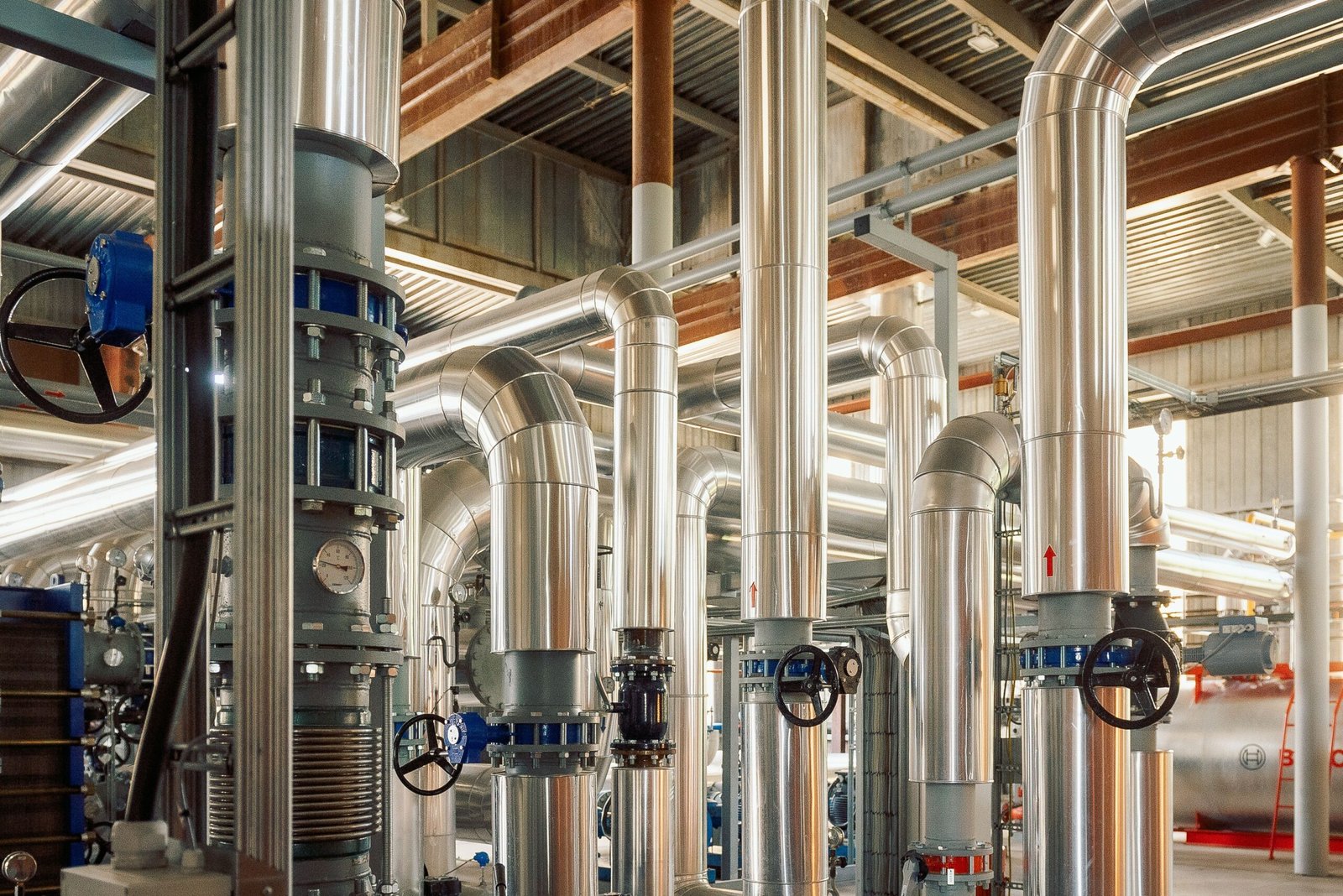
In a market as complex and volatile as today's, accurate price forecasting is the cornerstone of effective procurement and financial management. Moving beyond simplistic, single-variable predictions to a more holistic and dynamic methodology is no longer optional. It requires a disciplined approach that integrates macro-economic indicators, industry-specific data, and on-the-ground intelligence. By developing a comprehensive forecasting toolkit, companies can transform from being passive victims of market volatility to proactive participants, capable of anticipating shifts and making strategic decisions that protect their margins and enhance their competitive standing. This is not about finding a crystal ball; it's about building a robust framework for informed decision-making.
Building a Multi-Layered Information Dashboard
Effective forecasting begins with the rejection of any single source of truth. Instead, you must build a dashboard of leading and lagging indicators. The LME or SHFE nickel price is a foundational element, but it is just one piece of the puzzle. A comprehensive dashboard should also track the price of other key alloying elements like chromium and molybdenum7, as their movements also impact the final surcharge, especially for specific grades. Beyond commodities, it is crucial to monitor foreign exchange rates, as transactions are often conducted in USD, and fluctuations can impact the final cost in a local currency.
At MFY, our internal analytics team maintains a dashboard that visualizes these core financial indicators alongside physical market data. This includes tracking global and regional inventory levels at major exchanges and warehouses, as draws or builds in inventory are powerful indicators of near-term supply-demand balance. For one of our key distributor clients in India, we provide a bi-weekly summary from this dashboard. This allows them to see not just where the price is today, but also the momentum and underlying pressures that will likely influence the price tomorrow. This level of insight helps them decide when to build their own inventory and when to hold back.
Furthermore, monitoring freight and energy costs is becoming increasingly important. A sudden spike in bunker fuel or container shipping rates can add a significant, non-alloy-related cost to imported stainless steel pipes, a factor that simple surcharge forecasts will miss entirely.
Leveraging Supplier Intelligence and Relationships
Your suppliers are not just vendors; they are your most valuable source of real-time market intelligence. An integrated producer and trader like MFY has a view of the market that extends from the nickel mine to the final port of delivery. We have daily conversations with raw material suppliers, shipping lines, and end-users across dozens of countries. This qualitative, on-the-ground information is often a leading indicator of trends that won't show up in official statistics for weeks or months. Building a strategic, transparent relationship with your supplier can give you access to this invaluable insight.
For example, by understanding our own order book and production schedules, we can often provide our long-term partners with a forward view on lead times and potential supply bottlenecks. During a recent period of rising demand, we were able to advise a major construction contractor to place their orders for a large project several weeks earlier than they had planned. This allowed them to secure production capacity before lead times extended across the industry, saving them from costly project delays. This is not information that can be found online; it comes from a collaborative and trust-based partnership.
A best practice is to schedule regular (e.g., monthly) market review calls with the strategic sourcing team of your key supplier. Use this time to discuss not just your upcoming orders, but their view on market direction, logistical challenges, and any emerging trends they are witnessing.
Understanding Surcharge Formulas and Regional Variances
While many mills use a similar methodology for calculating alloy surcharges, the exact formulas can differ. These differences can be subtle but significant. Some mills may use a different averaging period for the nickel price, while others may apply different yield loss factors in their calculations. A crucial best practice is to obtain the specific surcharge formula from your primary suppliers. This allows you to run your own forecast simulations, providing a much more precise estimate of your future costs than a generic industry-wide prediction.
Furthermore, pricing is not globally uniform. Regional supply and demand dynamics, local import duties, and transportation costs create significant variances. A forecast for the European market may look very different from one for the Southeast Asian market, even for the identical product. For instance, the implementation of anti-dumping duties on stainless steel products in certain regions can create a significant price premium compared to the global average. We helped a client who was expanding their operations into a new market in the Middle East by providing a detailed breakdown of the "landed cost," which included not just the material price but also local duties, port fees, and inland transportation costs.
Therefore, forecasting must be regionally specific. Global trends provide the context, but local factors determine the final price. By combining a detailed understanding of supplier-specific surcharge formulas with an analysis of regional market conditions, a company can elevate its forecasting accuracy from a rough estimate to a reliable financial planning tool.
LME price alone is insufficientПравда
The text emphasizes that accurate forecasting requires multiple data points beyond just LME nickel prices, including surcharge formulas, inventory levels, and expert insights.
Suppliers only provide pricingЛожь
The article highlights that strategic suppliers offer valuable market intelligence beyond just pricing, including lead time forecasts and supply chain insights.
Заключение
Navigating the 2025 nickel market requires a strategic shift. Understanding the split between battery and stainless demand, leveraging supplier intelligence, and adopting sophisticated forecasting are no longer optional. Proactive, informed procurement is the key to managing volatility and securing your competitive advantage in the stainless steel industry.
-
Understand NPI's effect on nickel supply and stainless steel pricing. ↩
-
Discover how HPAL technology affects nickel output and market dynamics. ↩
-
Learn how R&D steers industry adaptation to nickel pricing fluctuations ↩ ↩
-
Understand the significance of 304 and 316 in stainless steel applications ↩
-
Learn how LME price affects stainless steel costs ↩
-
Understand the influence of energy costs on pricing ↩
-
Discover key alloys that influence stainless steel properties ↩
У вас есть вопросы или нужна дополнительная информация?
Свяжитесь с нами, чтобы получить индивидуальную помощь и квалифицированный совет.
